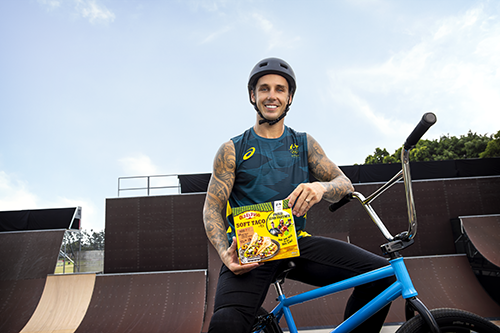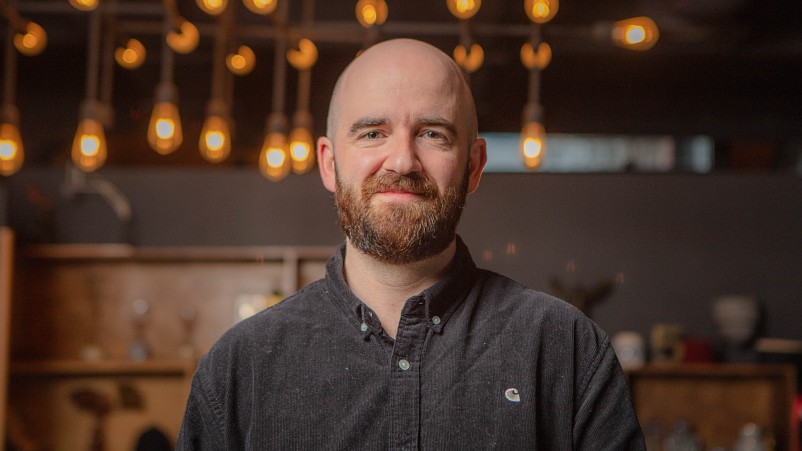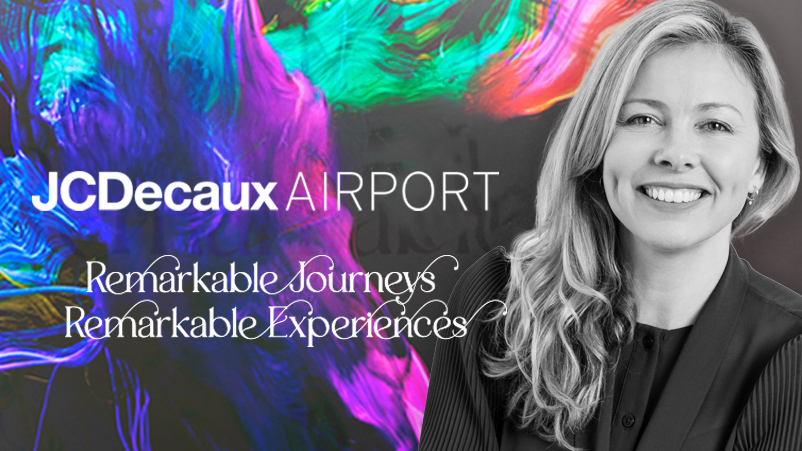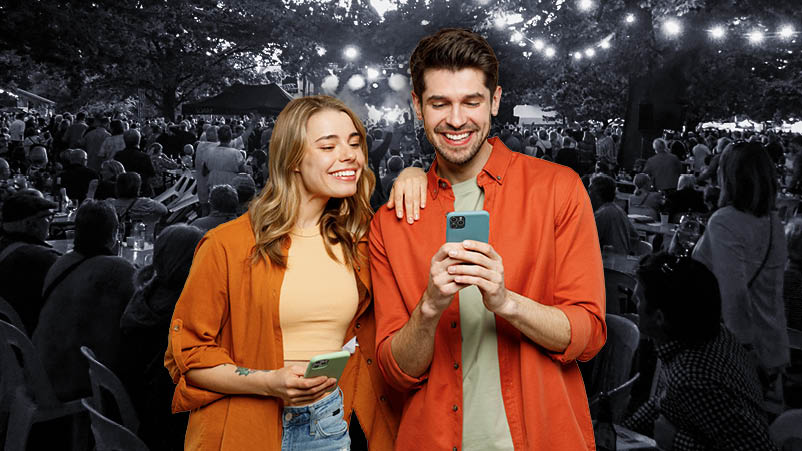How NRMA, Visa, Cadbury and Old El Paso are using everything from AI to creators, broadcast tie-ins and 'good noise' to boost brand during the 2024 Paris Olympic Games

From left: Natalie Lockwood, Michelle Klein, Kathy DeLullo, Surini Perera
Louvre concerts broadcast in Roblox, athletes as creators, AI-powered posters of sporting heroes and 70-plus Nine broadcast channels integrated into a simultaneous reach-personalisation play are just some of the diverse ways Australian brands are activating around the 2024 Paris Olympic Games. But even with the dynamic toolbox of tactics in play this year, marketers at NRMA Insurance, Visa, Cadbury and Old El Paso are singing from the same hymn sheet on seeking opportunities that inspire community, authentic human connection, positive values and virtuous brand storytelling over pure sales targets. With under 30 days to what many perceive as a rejuvenated global sporting competition after the covid-crimped Tokyo Olympics, Mi3 takes a dive into the marketing plans of four very different well-known brands in Australia lining up alongside the sporting tournament to find out why they’re backing the games and what ROI they’re looking to achieve.
YouGov figures might indicate Boomers are less than enthused about breakdancing, skateboarding, surfing and climbing being added to the Olympics line-up this year, but it’s having the opposite effect on younger people. According to the firm’s latest survey, at least one in three Gen Z and millennial consumers are more likely to be watching the 2024 Paris Olympic Games than previous events thanks to the latest sports program.
It’s a figure that should warm the hearts of the many brand marketers introducing or recalibrating Olympics activations in the hopes of winning over a younger demographic. On this list are Visa and Cadbury, brands investing heavily in activating around the 2024 Paris Olympic Games in tech-fuelled ways. Visa’s take includes supporting the first tie-in of sport and music via a concert in Paris’ Louvre broadcast in the Roblox metaverse. The payments giant is also supporting 100-plus Olympic athletes to build careers in the creator economy. At Cadbury’s meanwhile, AI-powered posters heroing up-and-coming teen sports stars along their Matildas’ soccer icons form part of a broader association with sports from junior to elite level that aims to encourage female participation in team sports – with a little help from the generosity of others.
Of course, supporting the Olympic Games isn’t just a play for younger consumers. YouGov figures show nearly the two-thirds of the population are intending to tune in to the summer Olympics tournament from 26 July to 11 August. And even as many marketers seek out ways to engage hard-to-reach audiences through this year’s Olympics, there’s a prevailing belief this year’s games are a much-needed positive cultural moment for all, providing one of the most authentic engagement opportunities brands can tap to build trust and consideration.
Take Old El Paso, making its Olympics marketing debut this year. The taco kit maker aims to become a top 10 meal choice for Aussie families and sees the ‘togetherness’ of the games as a great way to make some noise about its brand. Or there’s NRMA Insurance, another new entrant to the Olympic Games in 2024. The insurer will orchestrate activity across an unprecedented 70 channels across Nine’s stable, from linear TV and BVOD to radio and print, extend its 99-year-old heritage and story of ‘help’ across the nation for the first time.
Here, we outline how and why these four iconic brands are activating the way they are around this year’s 2024 Paris Olympic Games.
Success is not saying does this deliver X ROI, it’s going to be about overall shifts such as: Did we see the brand move? Did we see an impact on sales? Are we more relevant? There are a bunch of things we can look at, then tally that up and tell a story.
Tapping 70 Nine channels in the lead-up to 100 years: NRMA Insurance
2024 is the first year NRMA Insurance has supported the Olympic Games. And to do it, IAG has taken a tier-one broadcast media partnership with Nine.
It comes at a time when NRMA pumps the pedal on national expansion plans, launching operations in WA and SA alongside a longstanding presence in Tasmania, Queensland and the ACT. The Olympics is also a huge, trusted platform for the 99-year-old brand to leverage as it leads into its 100th year, says IAG chief customer and marketing officer, Michelle Klein.
In all, 70 Nine channels including total TV, print, radio and digital are in the mix, with traditional media reach complemented by personalised marketing at scale attainable by matching NRMA’s first-party data with Nine’s audience offering.
“The 2024 Paris Olympics Games felt like a wonderful moment to get on-board with one of the world’s most iconic sporting events. It captivates everyone globally and certainly in Australia, through Nine, we saw an opportunity with that ecosystem to reach nearly 100 per cent of Australians across all inventory,” Klein says.
“There hasn’t been games like this for a while... It almost feels like the beginning again of the Olympic Games. It helps us tell our story of help at a moment that matters for us.”
NRMA has a longstanding partnership with Nine around the nightly weather report and Klein points to this as a pot of learning feeding into its Olympic Games strategy. There are “interesting options” with content integrations, plus longer format stories as part of the ‘hour of power’ every night of the Olympic Games (7pm AEST). NRMA has been working with Nine’s internal agency, Powered by Nine, on ways to tell its story of ‘help’ and ‘preparedness’. The latter is a higher-order thought Klein sees as very much in line with what elite athletes do.
“Nine has been very thoughtful through its ecosystem, giving us the ability to reach more Australians as they’re feeding through content, medal tallies and major races where Australians are competing and the sports we love as Australians in prime viewing moments across channels. That also includes our own channels we can feed into such as social media,” Klein explains. “It’s comprehensive and different to previous media partnerships because it uses all of the Nine Network.”
In April, Nine stated premium partnership positions for the 2024 Games were fully subscribed, giving brands the ability to connect to 98 per cent of Australians across rights extending from TV to streaming, audio, digital publishing and digital assets.
As to the story NRMA wants to tell during the Olympics, Klein points to her overarching ambition to connect every brand touchpoint, media and marketing effort the business undertakes. It’s what led IAG to embark on a new style of partnership with Accenture Song leveraging its ecosystem of specialties, as discussed in a recent Mi3 podcast.
Klein’s own remit is vast and covers customer experience and relations, marketing, comms, regulatory, transformation and more across a combined operation that last year wrapped together teams from multiple business units and restructured their functions.
“What I was looking for coming into this role was how to simplify some of the hand-offs in the creative process, to have a more seamless, helpful experiences for customers. So wherever they engage with the brand it feels like the same brand to them,” Klein comments.
Together, agencies and internal teams are working on the road to NRMA’s centenary, with a new campaign set to land just before the Olympics that will start bringing this evolving story of ‘help’ to life.
“Help has an immense heritage: It’s in our DNA, and I’ve heard incredible stories about this brand. This has led to how we’re thinking about what to say as we head into 100 years,” Klein says. “NRMA was the first company to support the erection of an Australian highway lighthouse in NSW [located on the Princes Highway]; a NRMA campaign in the late 1950s resulted in 50 school crossings equipped with traffic lights to save precious lives. In the 1970s, seatbelts became compulsory to wear after NRMA supported the mandatory installation of approved seatbelts. In the 1990s, we released a Crash Rating Report, which assessed the validity of car manufacturer injury protection features. NRMA has championed women – we publicly disagreed with an English Magistrate in the 1930s and defended all women by stating driving ability had nothing to do with age or sex.
“We’re not going to give people a history lesson, but we are going to talk about our heritage of help.
“And our goal is to take that story to more markets across the country, so they understand why we exist, that our promise of help is always front and centre, and demonstrate that in creative ways that resonate with Australians.”
Preparedness is another pillar underpinning help and Klein highlights NRMA’s 2023 Help Nation program, a partnership with the Australian Red Cross providing disaster resilience education. Government data indicates only 3 per cent of all disaster resilience funding goes towards preparation, versus 97 per cent to recovery.
“NRMA data shows one in three don’t know local risk when it comes to wild weather, and less than half know what actions to take in an emergency. It’s harrowing,” Klein says. “These workshops, our emergency ready app – they’re further examples of what we are doing now to set up what we’ll do as we lead into the Olympics.”
For Klein, the Nine–2024 Paris Olympic Games collaboration will provide valuable learnings and a long-term brand boost.
“Success is not saying does this deliver X ROI, it’s going to be about overall shifts such as: Did we see the brand move? Did we see an impact on sales? Are we more relevant? There are a bunch of things we can look at, then tally that up and tell a story,” she says.
“We’re creating a lot of assets, different ways to tell our story and proof points. So we’ll go through week one, what we can tell from the first dip into what worked and didn’t. If we feel we need to go harder on specific parts of storytelling, can we blast through channels in more ways.
“But our Nine partnership goes way beyond that. We’ll take learnings and apply these to the weather, plus other great partners beyond Nine such as Meta, Google and News Corp. As an iconic Australian brand, want to try things together with our partners that surprise and delight the community.”
Klein adds NRMA is the most trusted insurance brand in the country and second-fastest growing brand behind Bunnings.
“We have the wind beneath our wings, so how do we bring that home, make it feel real, tangible and personable? That’s our goal here.”
We are leading on all the key brand attributes for Visa as a global brand, but we want to make sure that as a trusted, legacy brand we’re not complacent. Yes it’s 40 years with the Olympics. But each time we engage – whether it’s FIFA or the Olympics – we want to make sure we are showing up through testing and learning, and growing from a marketing point of view.
Olympics, the metaverse and the creator economy: Visa
It might be the 40th anniversary of Visa’s partnership with the Olympic Games, but this year’s marketing approach is the most experimental yet, according to its head of marketing ANZ, Natalie Lockwood. Traditionally, the team embraced a 70/30 split towards tried and true versus experimentation. With the 2024 Paris Olympics, it’s more like 50/50.
Just take what the brand did with its inaugural Visa Live at the Paris Louvre on 28 May. Not only were more than 4,000 attendees from 134,000 lottery participants enjoying a line-up of musicians such as Post Malone, Arya Starr and French DJ and musician, Kungs, the concert was broadcast live through Roblox.
“That’s a big first for Visa, combining our efforts in the world of art, culture and music around a sporting event as our first major activation in the lead-up to Paris,” Lockwood comments. “We’re prepared to experiment and bring all these wonderful assets we have as a brand together.”
Then there’s the investment into the creator economy to build connections with new audiences, particularly Gen Z. Visa’s first steps into the creator economy came with last year’s FIFA Women’s World Cup via its Player initiative, Lockwood says. Results included selling four times as many tickets compared to 2019, with 80 per cent of all those sold coming from Australian and New Zealand Visa cardholders. Brand affinity for Visa grew from 54 to 65 per cent, with an 18 per cent increase in return on investment.
“We were so enthused with results for our brand that rather than run a TVC around an Olympic brand moment, we decided to focus in on Team Visa athletes in the creator economy,” Lockwood says.
Four new Australian athletes have joined Team Visa for Paris 2024: Surfing champion, Molly Picklum; swimmer, Flynn Southam, middle distance Paralympian Jaryd Clifford; and footballer, Ellie Carpenter. In all, this year’s Visa team covers 117 Olympic and Paralympic athletes from 60 markets, 40 sports, and more than 45 million combined social followers.
But rather than working with athletes in a traditional brand ambassadorial sense, Visa is building their abilities as creators in their own right. It’s a blurring of the line Lockwood agrees we’re now seeing across earned, owned and paid channels – which in turn, requires brands to think more holistically about content and storytelling.
“Storytelling was through TVCs in the past, but as we’ve seen the rise and use of social media channels, the engagement we’re getting through Insta, Facebook, TikTok and YouTube show us how much of a shift has happened,” she says.
“What has us excited about Paris 2024 is utilising what we are doing with the creator economy. Over the last few years, we’ve been testing and learning how we show up as a brand with creators. It’s not just social media and content either. In the payments world, these creators are small businesses also monetising their creativity and content. What we’re now doing is taking it one step further with athletes, who themselves are creators. Some have phenomenal followings; others are in the early stages of their professional athletic careers.”
In 2023, Visa brought together 100 Team Visa athletes for a two-day ‘creator masterclass’ on better monetising as well as connecting their stories with fans to drive engagement. Workshops sat on top of existing financial support and mental health training Visa provides for athletes.
Other test-and-learn Lockwood points to with creators is around key marketing messaging on cross-border travel and partnerships. Sharing athletes' travel stories while visiting partner locations like Taronga Zoo gets double the engagement than other forms of social media posts, she says.
“We are leading on all the key brand attributes for Visa as a global brand, but we want to make sure that as a trusted, legacy brand we’re not complacent. Yes it’s 40 years with the Olympics. But each time we engage – whether it’s FIFA or the Olympics – we want to make sure we are showing up through testing and learning, and growing from a marketing point of view,” Lockwood says.
It’s also critical given Visa’s ambitions to build engagement and consideration with Gen Z. Several Australian athletes are in their early 20s with great connections into younger demos, and the authenticity these audiences demand is not lost on Lockwood and the Visa team.
“We’ll certainly be tracking relevance, connection and engagement with that audience,” Lockwood says. “One thing we’re looking to with Team Visa athletes is sharing with audiences what it’s like over there – that behind-the-scenes content, not just what’s on the telecast. For fans, followers, cardholders, it’s about experiencing Paris through their eyes. That’s very relevant for Gen Z, who like authenticity, not just what’s packaged up and seen on a telecast.
“That authenticity is what we’re all adjusting our mindsets around as marketers. To really show up in the creator economy, we have to let the control go in some ways too. It’s a challenge, but to be really true in that space, you have to let the authenticity of the creators you’re working with come through.
“Which is why test-and-learn and experimentation is fantastic. Having that mindset as a brand and marketing team that nine times out of 10 is going to work; then maybe there will be a learning opportunity, is critical. If we’re really going to play in this space, then we have to let go a little.”
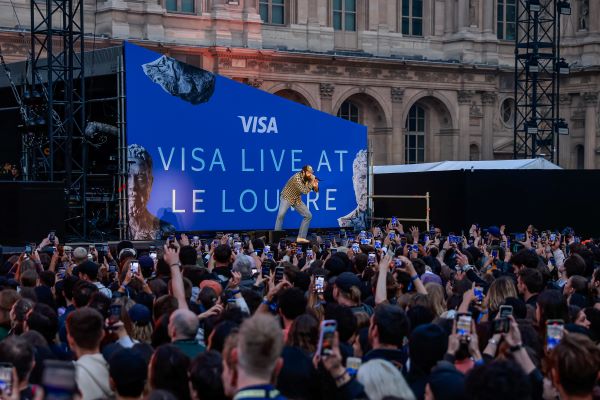
Sport is something that brings people together and that’s what Cadbury does – through visibility and shared moments. We want to facilitate connections, acknowledge small acts of generosity, one-to-one connection, and highlight those. Being able to dive into the values these athletes represent enables the community to connect. That’s where the connection is for Cadbury – we talk about team spirit, motivation, continuing to plough through.
An Olympic athlete like me: Cadbury’s AI play around generosity
It’s the fourth time around on the Olympics for Mondelez-owned Cadbury. According to local director of marketing excellence, Kathy DeLullo, it’s an association that keeps on giving for a brand rooted in the spirit of generosity.
“Sport has such power to unite the nation; no other event does it as much as the Olympics. With Cadbury being a brand that aims to be part of the fabric of the nation, it makes sense to align with monumental events for consumers across the country,” she tells Mi3. “Cadbury as a brand is rooted in generosity. And sport is full of generous moments, people participating or helping each other out from grassroots to elite athlete level.
Cadbury’s 2024 Paris Olympics activity ties into a broader play over the last 10 years to support platforms inspiring younger generations to get active. The FMCG brand has invested $50 million over the last decade in sport, from grassroots level and community to elite athletes. In the last five years, it’s also put significant emphasis on women’s participation through its Matildas team alliance, and recently extended its Wallaroos women’s rugby union team partnership to 2029.
“We know one in two girls drop out of sport by 15 years old. We also know support and visibility plays a key role: How can you be what you can’t see?” DeLullo asks. “Through myriad female sporting goals, our aim is to keep girls in the game. When they play, it gives them an opportunity for fellowship, leadership and teamwork. The journey of the Matildas has been phenomenal, and its role in changing cultural moments and how Australians view women's sport has been wonderful. It’s great to be part of that.”
For the 2024 Paris Olympics, Cadbury has kicked off with an AI-generated poster idea first launched during the 2023 FIFA Women’s World Cup to lift female visibility in sports. The tool allows consumers to personalise and share posters featuring upcoming stars alongside Matildas’ icons. Over 8,000 posters were generated in Australia last year under the inaugural FIFA campaign.
Debuting on 14 June 2024 was the first 2024 Paris Olympic poster featuring Matildas star Alanna Kennedy with upcoming 13-year-old footballer Madison Theivendram alongside.
“The next stage of the campaign also uses AI is a way for our elite athletes to acknowledge volunteers that enabled them to reach the games,” DeLullo says.
The new Gen AI video campaign pays tribute to unsung sports volunteers. It's the latest iteration of the brand's ongoing 'Cheer & A Half' initiative, which acknowledges the significant contribution of volunteers to grassroots sports. The campaign utilises a consumer-facing AI tool that enables users to create unique, animated, and personalised videos featuring a volunteer they wish to thank. These videos can then be shared on social media.
“Without that generosity of volunteers, a lot of people wouldn’t be here today. It’s all about those acts of generosity.”
There are also opportunities in-store to win money can’t buy prizes including welcome the Australian Olympics teams back at the airport hangar.
“In our first Olympics executions, that would have just been a straight reward. The evolution is in how we acknowledge, inspire and enable people to be generous and actually support members of the sporting community, whether it’s volunteer to elite athletes,” DeLullo says.
Measuring the value of investment links back into key branding associations and values including whether Cadbury is up to date; if Cadbury is bringing people together; and elements of progressive generosity.
“Sport is something that brings people together and that’s what Cadbury does – through visibility and shared moments,” adds DeLullo. “We want to facilitate connections, acknowledge small acts of generosity, one-to-one connection, and highlight those.”
Equally, there’s more emphasis on the ‘right’ values. “Being able to dive into the values these athletes represent enables the community to connect. That’s where the connection is for Cadbury – we talk about team spirit, motivation, continuing to plough through,” DeLullo says.
“We work hard to be clear on value systems inherent to the brand to begin with. It’s something that’s needed within our community today.”
From a media perspective, DeLullo says integration across different channels is important in 2024. “We have a lot of digital components, and including generative AI is a new way to enable people to acknowledge each other,” she says.
“The use of ambassadors – which are on special edition Cadbury packs – captures your attention, but the message they’re talking about is relevant to the wider community. That combination of ambassadors, how we use them in storytelling to support their game, role of in-store promotion, digital is all playing a role.”
There’s also the sheer reach of the media channels Cadbury’s can’t ignore. “Three in four households buy a Cadbury product over the course of the year. Reaching that many homes through visibility of athletes and future athletes is key to our brand,” DeLullo adds.
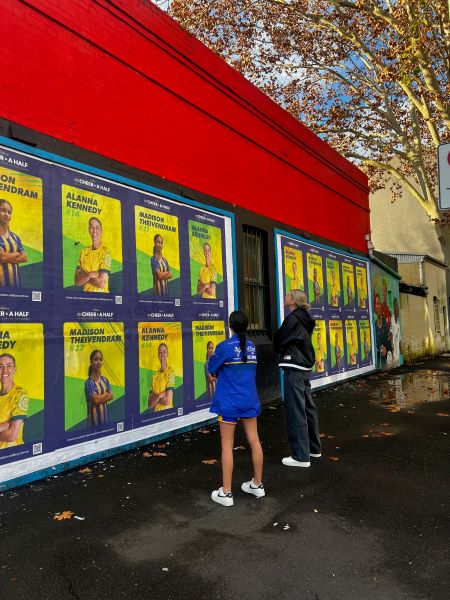
It’s all about the notion of your home team, bringing and using our meals at the table and linking ourselves to those moments. Our ambition is to be in the top 10 repertoire of go-to meals in Australia.
Making ‘good’ noise with the home team: Old El Paso
Old El Paso is a US$180 million US brand owned by General Mills taking a very local approach to marketing as Mexican food consumption as an occasion continues to rise across Australia. Marketing director, Surini Perera, says the brand’s ultimate ambition is to secure a place in the top 10 repertoire of meals for Australian families.
So for the first time, it’s become the Official Meal Kit Partner of the Australian Olympic Team at the Paris 2024 Olympics. Activity includes extending the brand’s existing ‘Make Some Noise’ campaign positioning through alliances with several Aussie athletes competing at the Games. Old El Paso’s three ambassadors are Freestyle BMX star, Logan Martin; Australian team flag bearer and bronze medallist with the Boomers at the Tokyo 2020 Olympics, Patty Mills; and two-time Olympian and Australian Matildas team goalkeeper and Women’s Super League club West Ham United player, Mackenzie Arnold.
“We believe storytelling matters and meals provide important moments of connection. Our mission is to inspire then enable mealtime moments filled with fun and vibrancy. We call it ‘good noise’,” says Perera.
Besides the heft of the Olympics Games as a uniter of communities, Perera points to the extended Olympics’ motto of ‘faster, higher stronger - together’ as another reason why the brand is getting behind the games for the first time. ‘Together’ was added to the Olympics motto in 2021.
“‘Together’ is an indicator of sentiment and that it’s more than the win, it’s the journey and togetherness that’s important,” Perera says. “That nuance and the way families are a community, plus the fact mealtimes are about bringing people together, makes this a nice tie-in with our brand.”
Old El Paso’s is a full 360-degree campaign, encompassing above-the-line and below-the-line activations, partnerships leading up to the Olympics, then over the main games period, followed by return home flighting.
“Using our ambassadors, we’ll be driving content for the three months leading up to the game, then move into in-store,” Perera explains. “We have special packs and pricing across six key products, and have changed the logo to green and gold for a limited period. We can do this as we have built equity and distinctiveness with our brand. We’ll have consumer promos and in-store promotions.
“We have been in this country for a long period of time, keeping true to the message and what we stand for.”
But even when thinking through its Olympics activity, the important factor is longevity. “We want to start conversations that last beyond the Olympics, aligning our brand to that mealtime occasion,” Perera says.
ROI for Old El Paso is therefore aligned to short plus long-term goals. Consumption of product is important, but Perera’s ambition is to also drive brand consideration. Old El Paso aided awareness is 95 per cent in Australia, while brand consideration is 78 per cent. Estimates are that 230 million of its tacos are eaten each year, with the top-selling product its Hard n Soft Taco Kit at 3 million packs per year.
“It’s all about the notion of your home team, bringing and using our meals at the table and linking ourselves to those moments,” she says. “Our ambition is to be in the top 10 repertoire of go-to meals in Australia.”
With cost of living a major concern and families as time poor as ever, Perera sees the intersection of mealtimes as moments of connection plus the desire for great nutrition at a value price point as playing to Old El Paso’s strengths.
“We’re not changing tactics, we’re bringing out a truth we have lived for a long time,” she adds.
